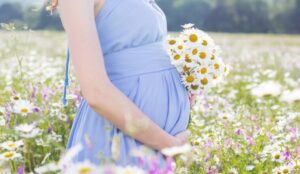 Her friends are having babies, and Helen is getting discouraged. It seemed they hadn’t done anything except stop using birth control. She did that over a year ago, and still nothing. Her periods seem regular and seem normal to her. She did some reading, and found out she needs to know when she ovulates to know what days she is fertile and most likely to get pregnant. She is determined to increase her chances of having that precious baby she longs for.
Her friends are having babies, and Helen is getting discouraged. It seemed they hadn’t done anything except stop using birth control. She did that over a year ago, and still nothing. Her periods seem regular and seem normal to her. She did some reading, and found out she needs to know when she ovulates to know what days she is fertile and most likely to get pregnant. She is determined to increase her chances of having that precious baby she longs for.
When Does Ovulation Occur?
- When the egg is released from the ovary
- Usually in the middle of your menstrual cycle
- After the LH surge
- When you have signs of ovulation
Ovulation occurs when a mature egg is released from the ovary. It then travels into the Fallopian tube, and is ready for fertilization. If a woman has a predictable 28 day cycle, this occurs on day 14, the middle of her cycle. Usually a more accurate description is that ovulation occurs two weeks before the start of the next menstruation. So if you have a long cycle, you will ovulate later, and with a short cycle it will be earlier.
The LH surge is the rise of Luteinizing Hormone, which causes ovulation to occur within 24-36 hours. The egg leaves the ovary and begins its journey down the Fallopian tube to be fertilized. It is this LH surge that is commonly measured by an ovulation predictor kit.
Your physical signs of ovulation will help you to know when ovulation does occur. The most obvious sign is often fertile cervical mucus. This normal discharge from the cervix is thick and slippery, and quite distinctive when you begin to watch for it. It usually is present a few days before ovulation, and the most obvious and abundant the day before.
But you must know that ovulating is not the same as being fertile. Ovulation is simply the release of the egg. For fertility more factors are involved. The egg must survive and then meet up with the sperm. If all goes well, this will occur and conception will take place.
To Your Vibrant Health!
Veronica Tilden, DO
